If You Can’t Do These 5 Moves, Your Body May Be Aging Too Fast
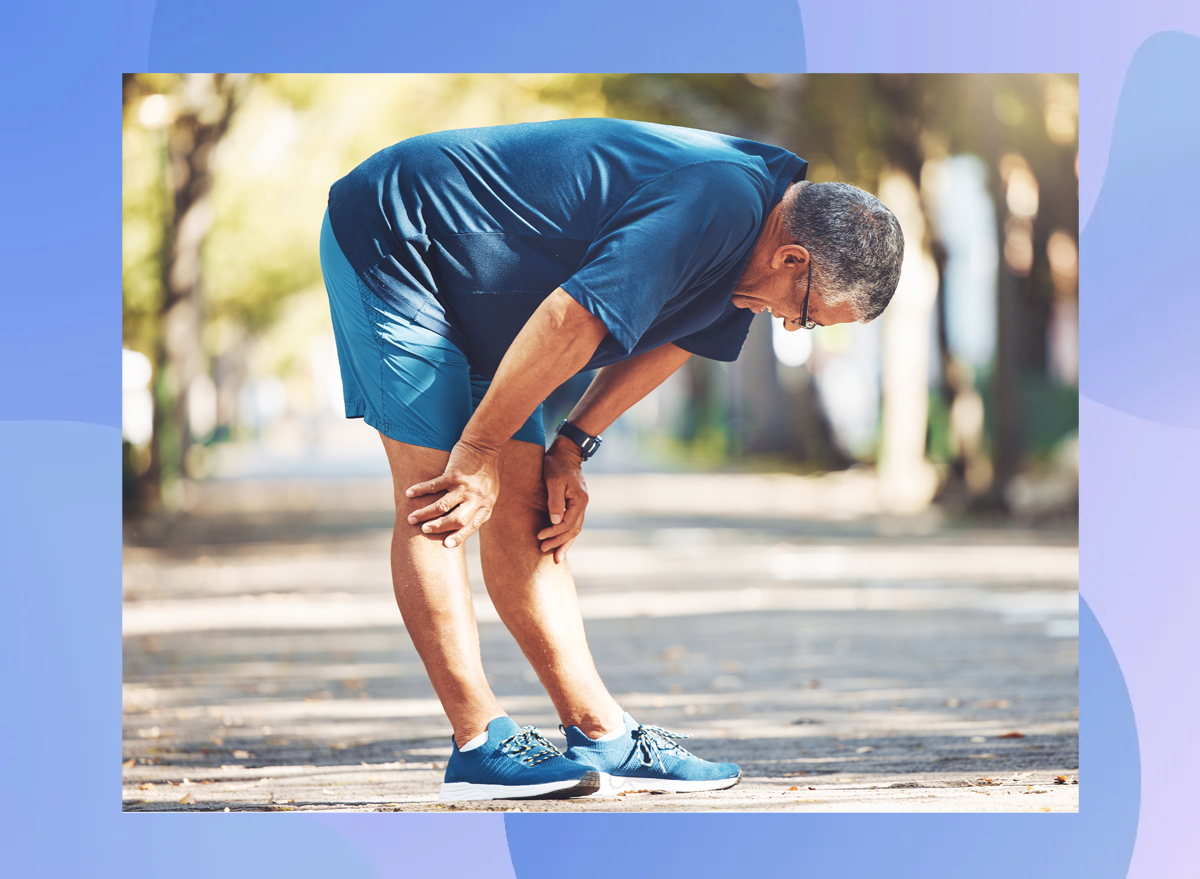
Want to add more healthy years to your life? You’re not alone. A 2023 Talker Research survey revealed that 33 percent of U.S. adults want to prioritize healthy aging as a top goal for 2025, making it one of the year’s biggest health trends. One of the most effective ways to age gracefully is by maintaining the foundational movements that keep your body strong and functional. We spoke with Lola Lopez Guardone, CPT, an ACE-certified personal trainer with FitForAll, who shares five simple yet powerful exercises to improve strength, mobility, and balance to help you thrive at any age.
“Your ability to move well is a powerful indicator of your overall health and longevity,” Guardone explains. “Strength, flexibility, balance, and coordination aren’t just fitness goals—they’re essential skills for maintaining independence, preventing injuries, and staying active for life.”
As you age, it’s common for basic movements to become more challenging or overlooked. This is risky business, considering the National Institutes of Health says the natural loss of strength, flexibility, and coordination that occurs with aging can lead to a higher risk of falls and fractures. However, regularly incorporating these foundational exercises can help preserve your functional health and prevent premature aging. So, whether you’re finding it harder to get off the floor or experiencing stiffness in your daily activities, these essential movements are vital markers of your body’s overall health and longevity.
The way we move tells a lot about our overall health. Movements that challenge multiple muscle groups, improve stability, and maintain flexibility are crucial for aging bodies. If you find these moves more challenging than you used to, it could indicate muscle loss, mobility issues, or a decline in neurological health. Luckily, these issues are reversible with consistent practice.
Read on to discover the five basic movements that everyone should be able to perform, regardless of age. When you’re finished, be sure to check out The 60-Second Strength Test That Reveals Your True Fitness Age.
Sit-to-Stand (Ground to Standing)
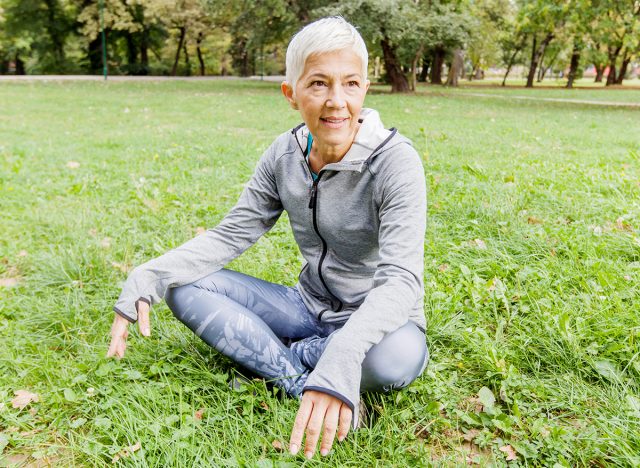
The sit-to-stand movement challenges your entire lower body, such as your hips, quads, and glutes, all while also testing your balance. It’s a fundamental functional movement that reflects your strength and stability. “Struggling to stand without hands often reflects lower-body weakness, balance loss, or reduced hip/knee mobility,” Guardone says.
Guardone recommends practicing sit-to-stands from a sturdy chair and gradually progressing to floor-to-stand variations. Repeating this movement will build muscle and mobility in your legs, hips, and core.
Horizontal Push/Pull
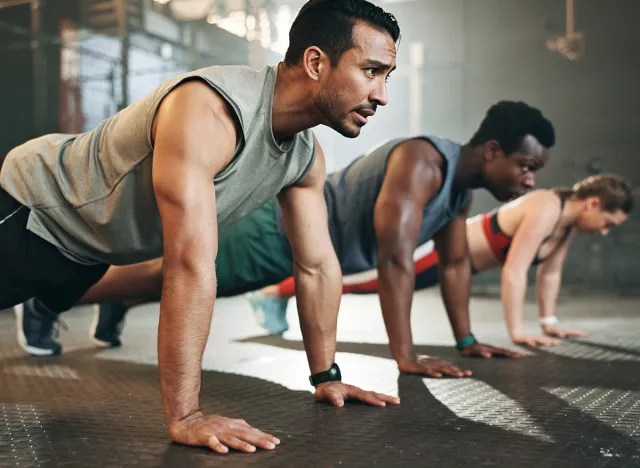
Horizontal pushing and pulling movements are critical for building upper-body strength and supporting healthy posture. These exercises target your chest, back, and shoulder muscles, which are key for maintaining a strong upper body.
Difficulty with push-ups or rows can indicate weak chest, back, and shoulder muscles, which could lead to poor posture, shoulder issues, and overall reduced upper-body endurance. Guardone explains, “Weak push or pull strength can contribute to rounded posture, shoulder dysfunction, and reduced upper-body endurance.”
If normal push-ups are too difficult, try incline push-ups to build strength progressively. For pulling movements, try doing rows using resistance bands or TRX. Aim for two to three sessions per week.
Vertical Push/Pull
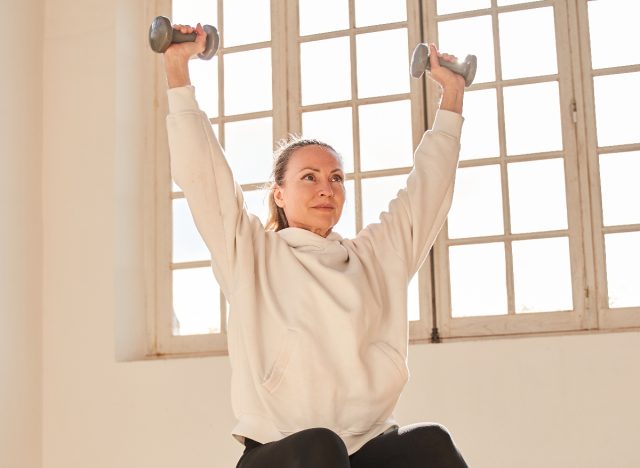
Vertical pushing and pulling movements help maintain shoulder mobility and strength, which are crucial for lifting, reaching, and overall upper-body mobility. Guardone says, “Limited range overhead or pulling weakness often signals shoulder mobility loss and upper-body imbalance.”
Struggling with vertical movements could signal limited shoulder mobility or upper-body imbalance, which can affect everything from lifting to simple daily tasks like reaching for something on a high shelf.
Add overhead presses (with light weights or resistance bands) and assisted pull-ups or lat pulldowns into your routine. These movements will help strengthen your shoulders and upper back to boost your strength and range of motion.
Single-Leg Balance (Lunge/Split Squat Pattern)
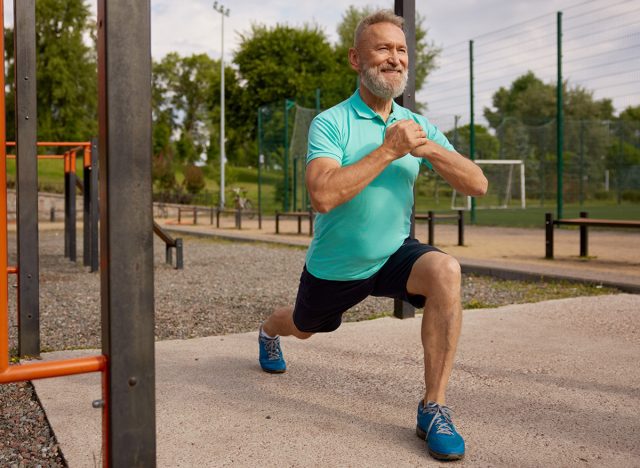
“Single-leg strength is crucial for walking, climbing stairs, and preventing falls,” Guardone says. This movement targets your hips and glutes, which support posture and mobility. Additionally, difficulty with lunges or split squats can indicate poor balance, weak hip muscles, or knee instability, leading to an increased risk of falls or fractures.
Try incorporating assisted lunges or static split squats into your fitness routine. Aim for two or three sessions per week.
Anti-Rotational Stability (Core Control)
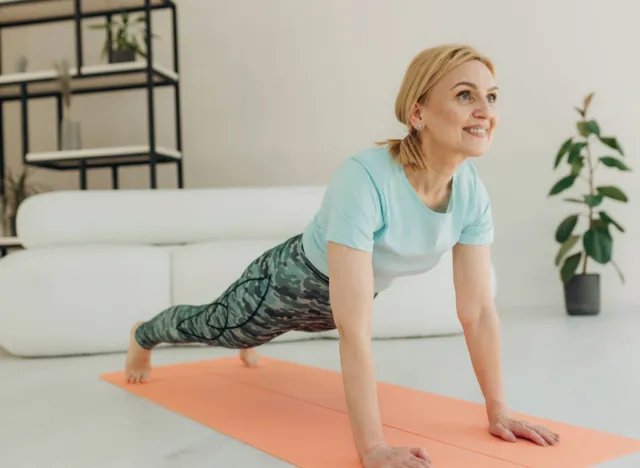
“Anti-rotational strength stabilizes your spine, improves balance, and protects against back pain,” Guardone explains. If your core can’t stabilize during planks or deadbugs, you may have weak deep-core muscles and reduced trunk control, which can lead to lower back pain and poor posture. To fix this, add core exercises like plank shoulder taps, bird dogs, and deadbugs to your workouts two or three times a week.